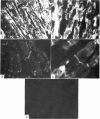Abstract
Four different cross-reactive antigens were revealed in cultures of group A streptococci by immunoelectrophoresis using antistreptococcal sera unabsorbed, or absorbed with homogenates of rabbit heart tissue. Preliminary study of these sera by immunofluorescence showed that they react with different elements of the myocardium.
The hypothesis is suggested that the biological (immunizing) action of microbial cross-reactive antigens depends on the presence or absence of immunological tolerance to these antigens in the individual immunized. The mechanism of autoantibody formation by immunization with such common antigens is discussed.
Full text
PDF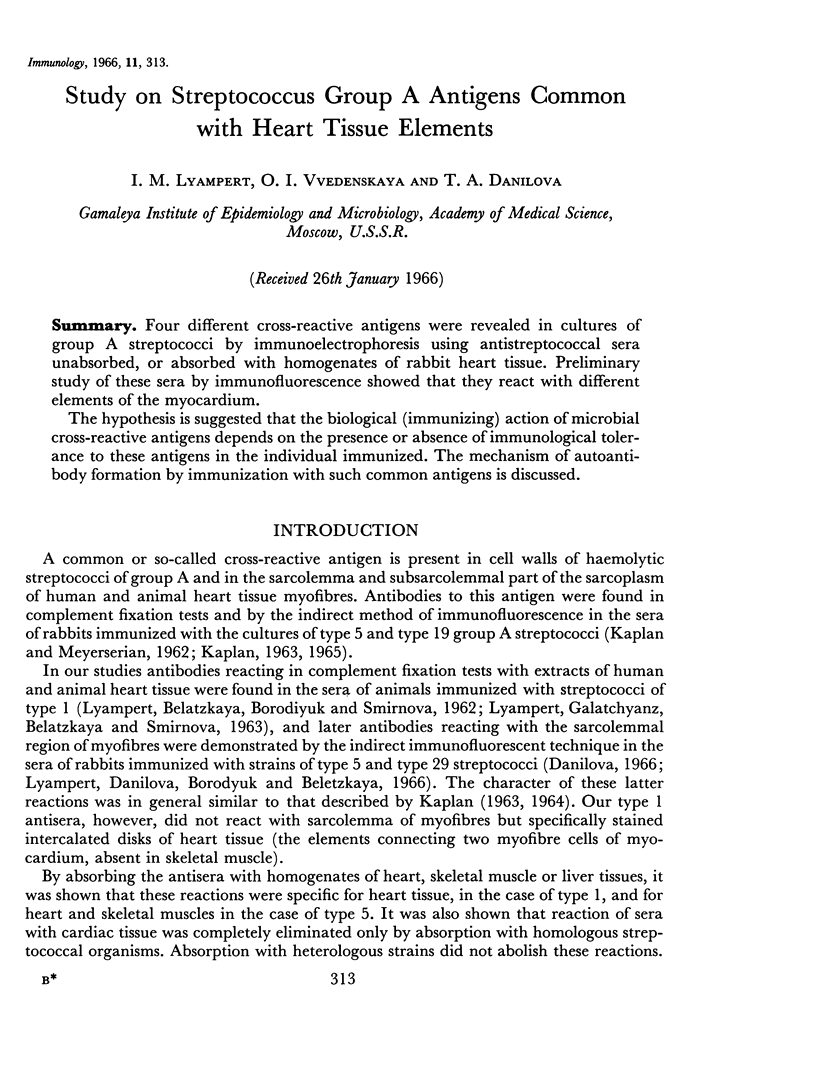
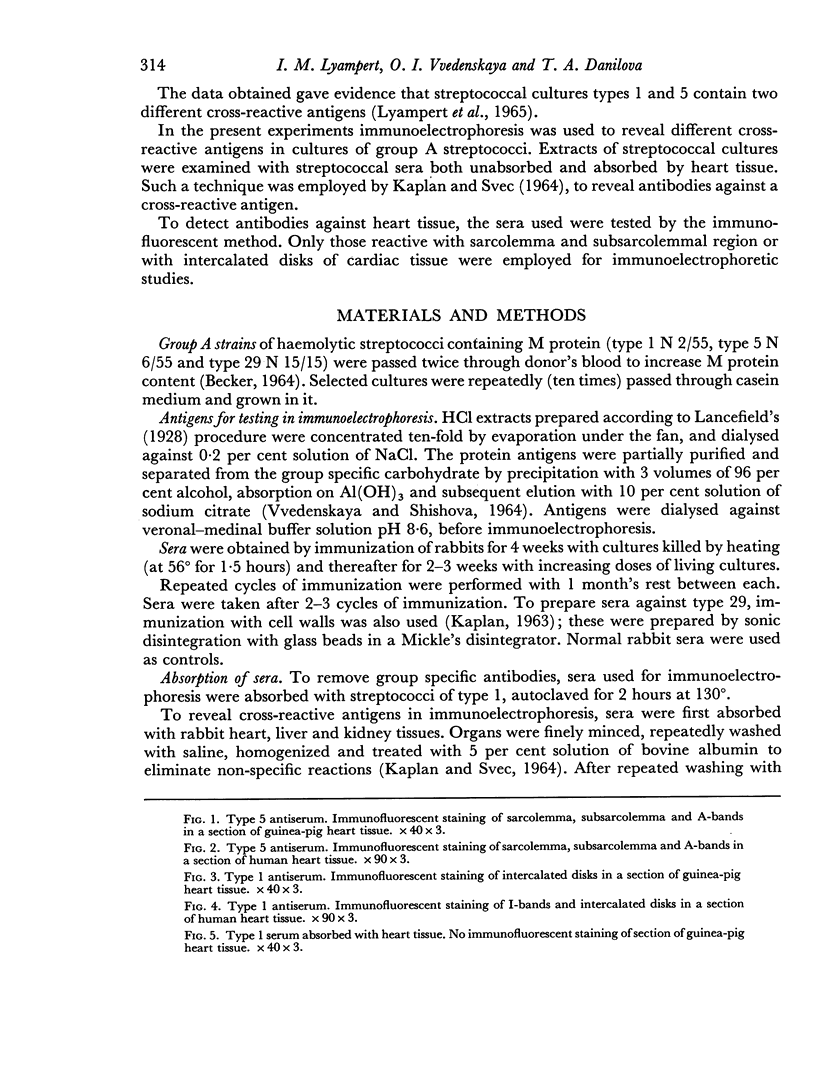
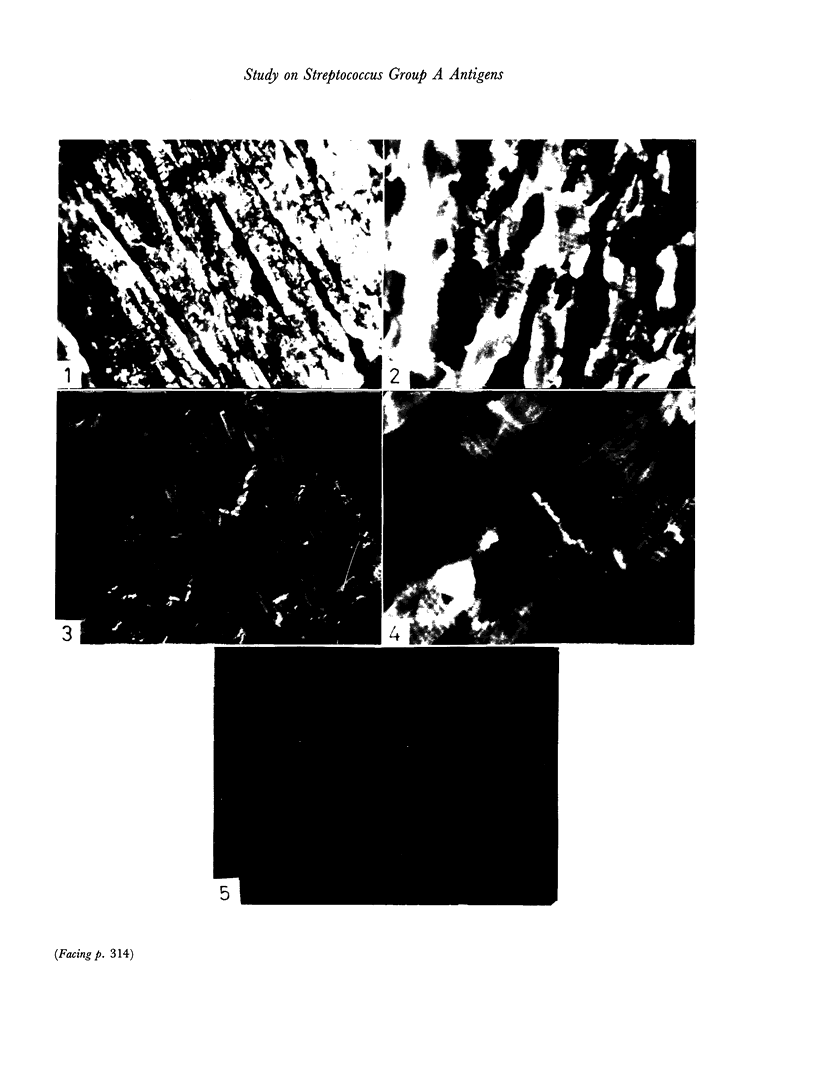
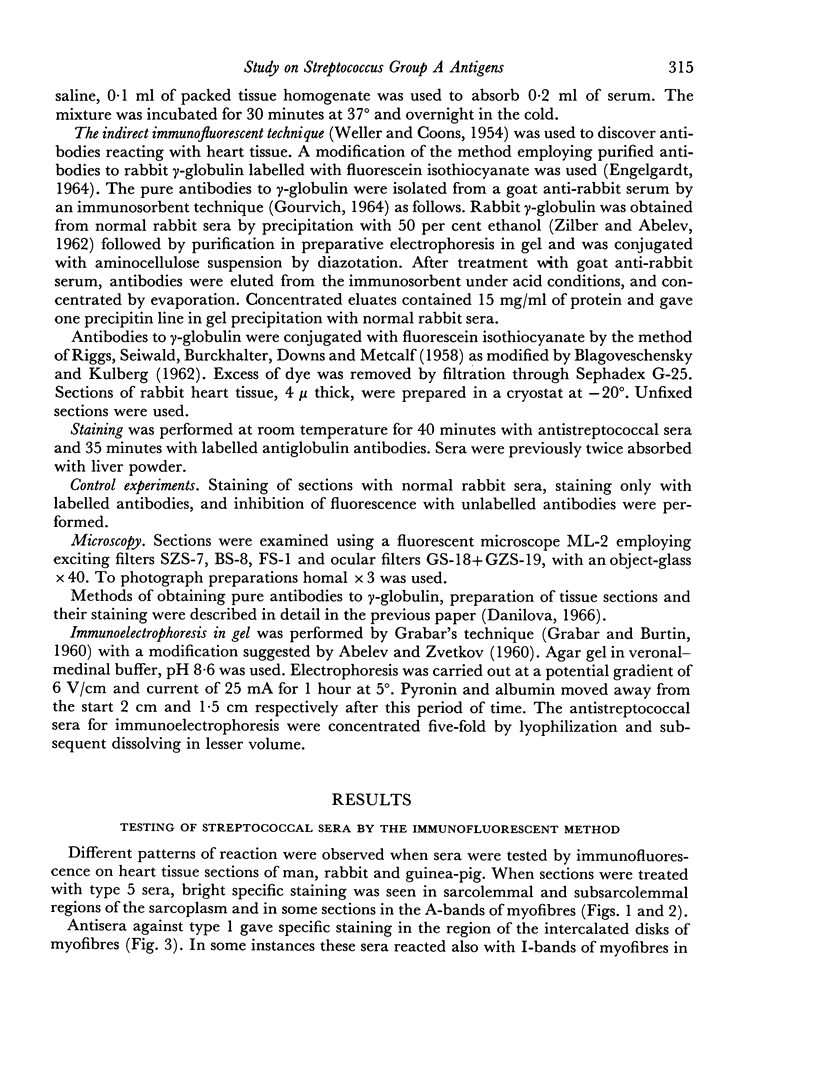
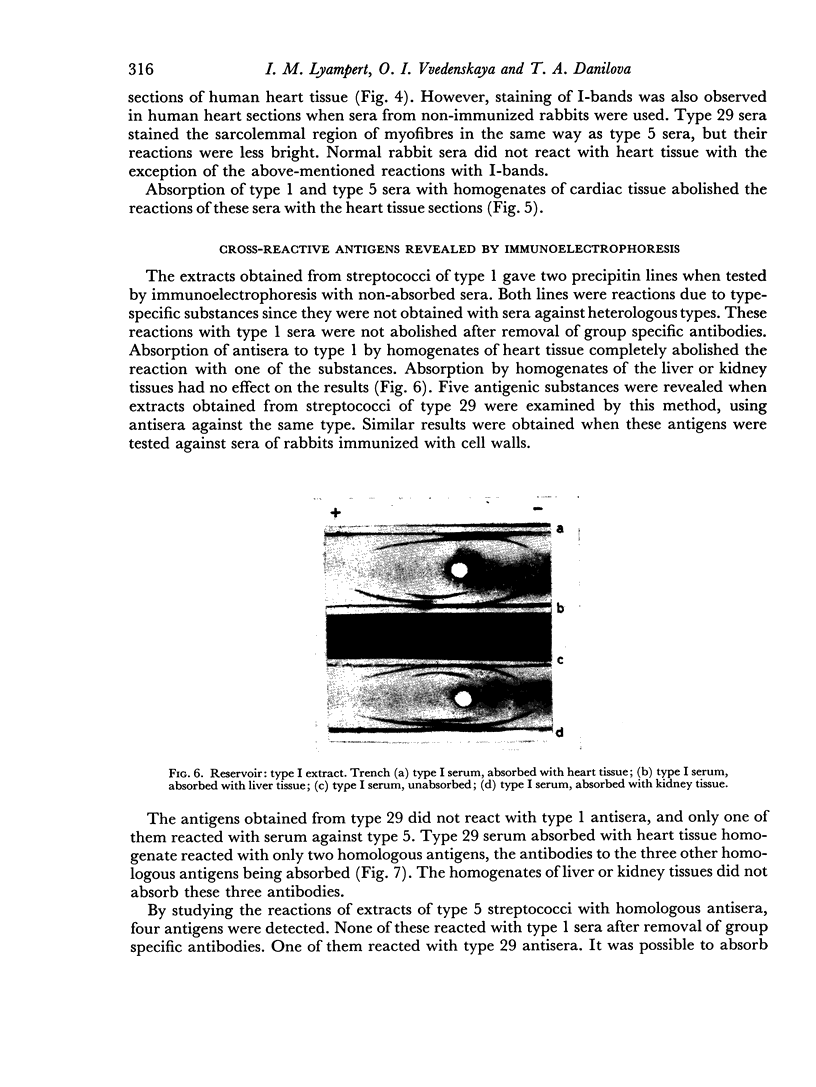
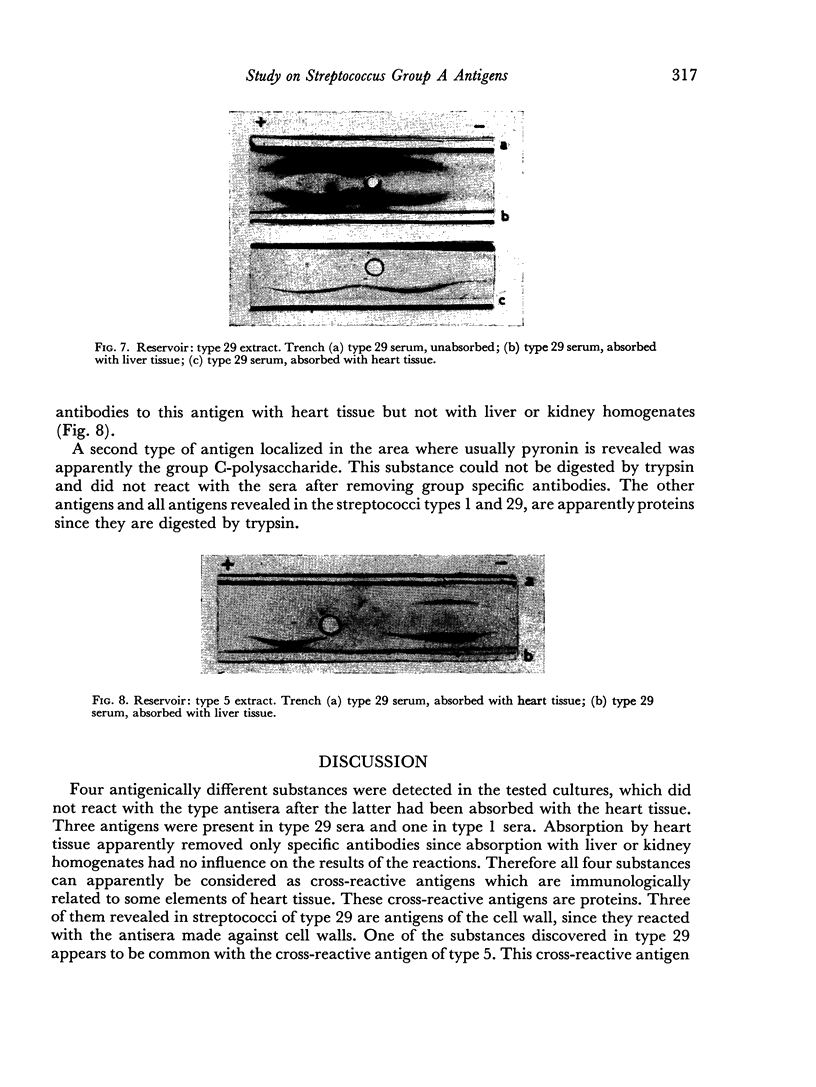
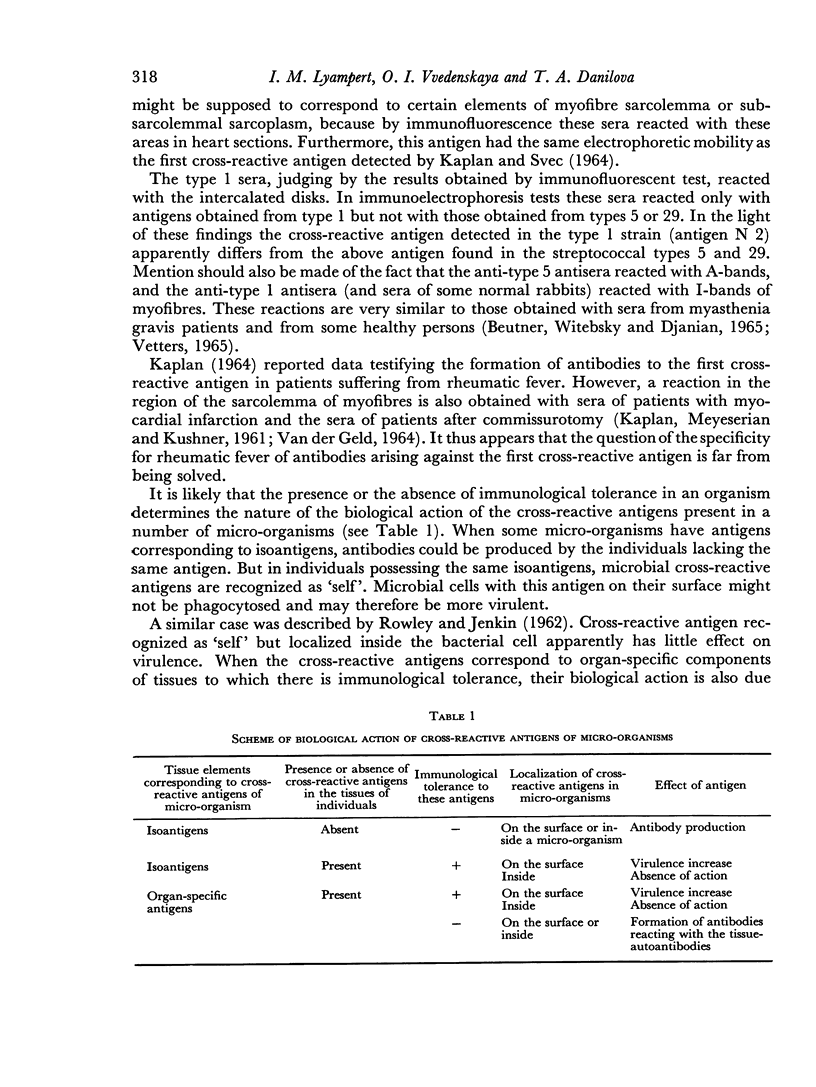
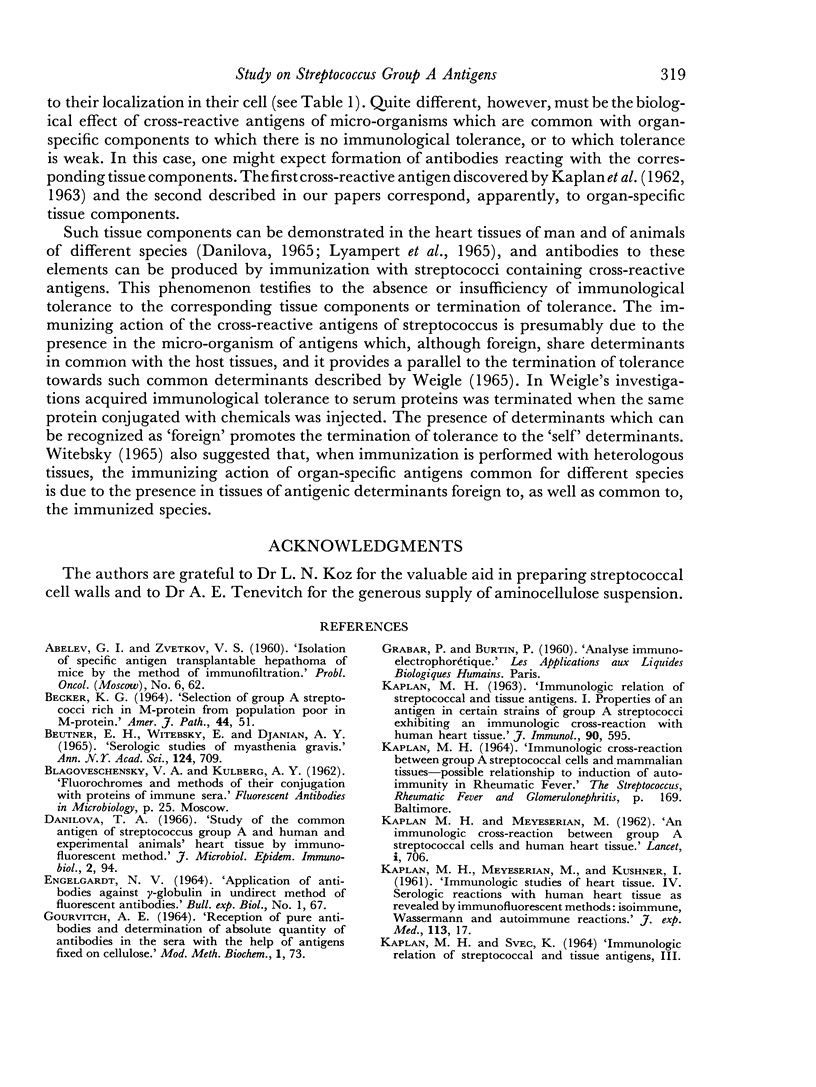
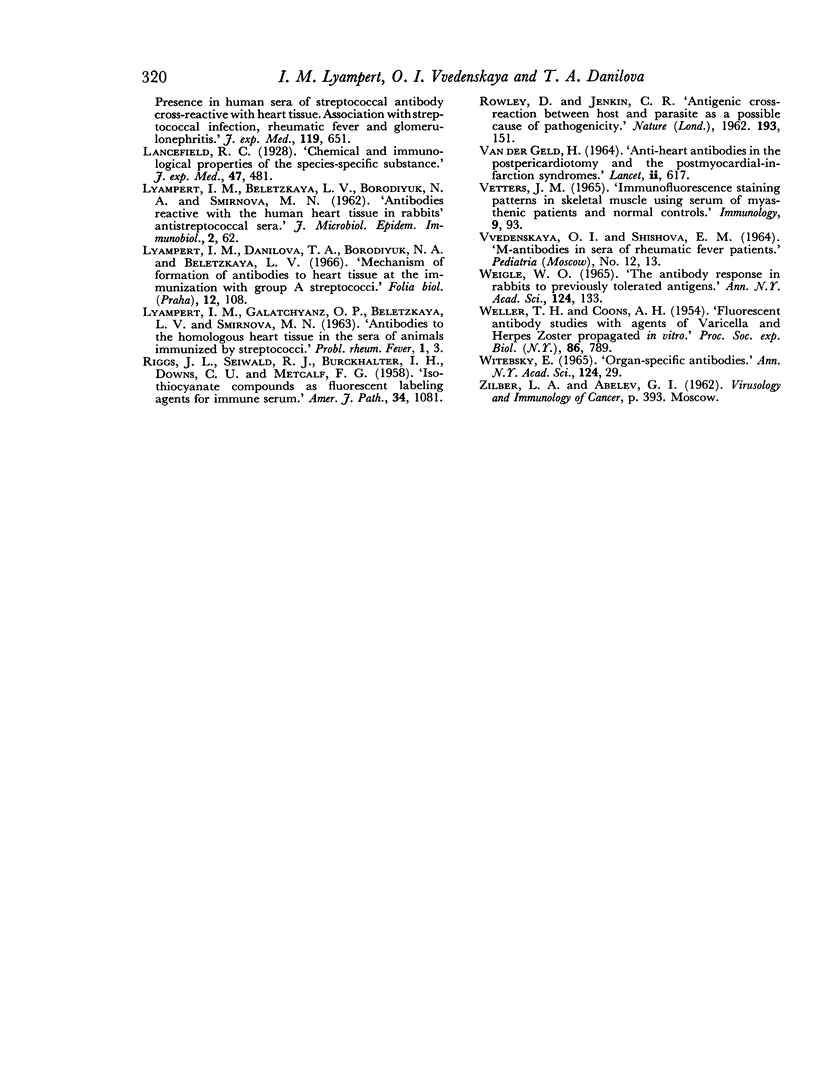
Images in this article
Selected References
These references are in PubMed. This may not be the complete list of references from this article.
- BECKER C. G. SELECTION OF GROUP A STREPTOCOCCI RICH IN M-PROTEIN FROM POPULATIONS POOR IN M-PROTEIN. Am J Pathol. 1964 Jan;44:51–60. [PMC free article] [PubMed] [Google Scholar]
- Beutner E. H., Witebsky E., Djanian A. Y. Serologic studies of myasthenia gravis. Ann N Y Acad Sci. 1965 Jun 30;124(2):709–729. doi: 10.1111/j.1749-6632.1965.tb18997.x. [DOI] [PubMed] [Google Scholar]
- KAPLAN M. H. IMMUNOLOGIC RELATION OF STREPTOCOCCAL AND TISSUE ANTIGENS. I. PROPERTIES OF AN ANTIGEN IN CERTAIN STRAINS OF GROUP A STREPTOCOCCI EXHIBITING AN IMMUNOLOGIC CROSS-REACTION WITH HUMAN HEART TISSUE. J Immunol. 1963 Apr;90:595–606. [PubMed] [Google Scholar]
- KAPLAN M. H., MEYESERIAN M. An immunological cross-reaction between group-A streptococcal cells and human heart tissue. Lancet. 1962 Apr 7;1(7232):706–710. doi: 10.1016/s0140-6736(62)91653-7. [DOI] [PubMed] [Google Scholar]
- KAPLAN M. H., MEYESERIAN M., KUSHNER I. Immunologic studies of heart tissue. IV. Serologic reactions with human heart tissue as revealed by immunofluorescent methods: isoimmune, Wassermann, and autoimmune reactions. J Exp Med. 1961 Jan 1;113:17–36. doi: 10.1084/jem.113.1.17. [DOI] [PMC free article] [PubMed] [Google Scholar]
- Lyampert I. M., Danilova T. A., Borodyuk N. A., Beletskaya L. V. Mechanism of formation of antibodies to heart tissue in immunization with group A streptococci. Folia Biol (Praha) 1966;12(2):108–115. [PubMed] [Google Scholar]
- RIGGS J. L., SEIWALD R. J., BURCKHALTER J. H., DOWNS C. M., METCALF T. G. Isothiocyanate compounds as fluorescent labeling agents for immune serum. Am J Pathol. 1958 Nov-Dec;34(6):1081–1097. [PMC free article] [PubMed] [Google Scholar]
- ROWLEY D., JENKIN C. R. Antigenic cross-reaction between host and parasite as a possible cause of pathogenicity. Nature. 1962 Jan 13;193:151–154. doi: 10.1038/193151a0. [DOI] [PubMed] [Google Scholar]
- VAN DER GELD H. ANTI-HEART ANTIBODIES IN THE POSTPERICARDIOTOMY AND THE POSTMYOCARDIAL-INFARCTION SYNDROMES. Lancet. 1964 Sep 19;2(7360):617–621. doi: 10.1016/s0140-6736(64)90512-4. [DOI] [PubMed] [Google Scholar]
- Vetters J. M. Immunofluorescence staining patterns in skeletal muscle using serum of myasthenic patients and normal controls. Immunology. 1965 Jul;9(1):93–95. [PMC free article] [PubMed] [Google Scholar]
- WELLER T. H., COONS A. H. Fluorescent antibody studies with agents of varicella and herpes zoster propagated in vitro. Proc Soc Exp Biol Med. 1954 Aug-Sep;86(4):789–794. doi: 10.3181/00379727-86-21235. [DOI] [PubMed] [Google Scholar]
- Weigle W. O. The antibody response in rabbits to previously tolerated antigens. Ann N Y Acad Sci. 1965 Jun 30;124(1):133–142. doi: 10.1111/j.1749-6632.1965.tb18949.x. [DOI] [PubMed] [Google Scholar]
- Witebsky E. Organ-specific autoantibodies. Ann N Y Acad Sci. 1965 Jun 30;124(1):29–36. doi: 10.1111/j.1749-6632.1965.tb18939.x. [DOI] [PubMed] [Google Scholar]



